How To Store Food Scraps For Composting At Home
Are you interested in composting but don’t know how to store your food scraps until you’re ready to take them out to your compost bin? Here are several ways to store food scraps for composting at home.
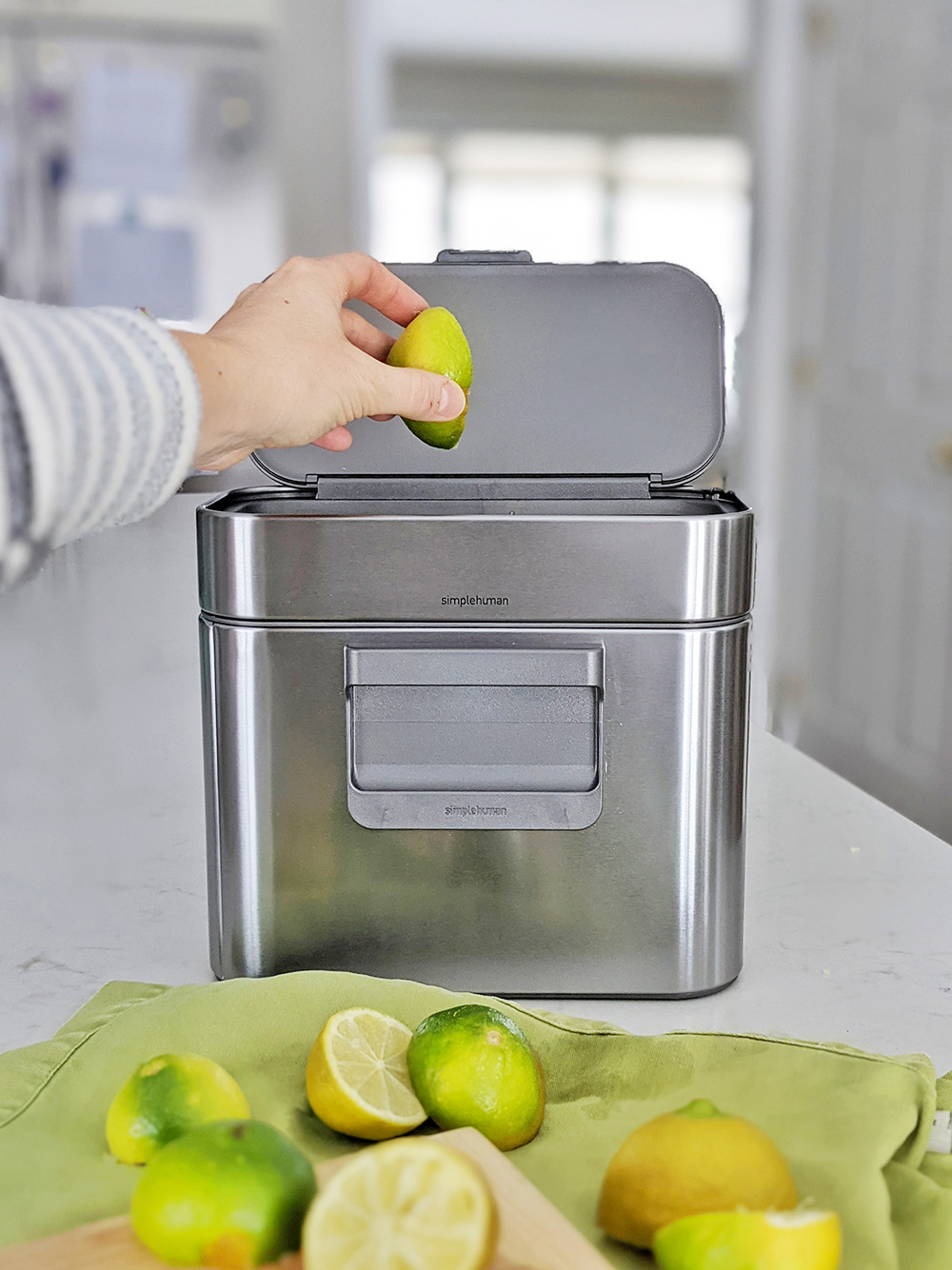
You’re ready to start composting your kitchen scraps, coffee grounds, egg shells, and all those nutrient-rich organic materials that don’t belong in our landfills. But… you’re not sure what to do with the food waste as it piles up in your kitchen? Fear not. Those food scraps don’t have to stink up your kitchen.
No matter how you compost (and there are many ways to compost at home), you’ll likely have a period of time between when you create the food scraps and when you take them to a compost collection spot. There are many ways to store these food scraps before they are ready for a trip to your compost bin, the collection at your farmers’ market, or wherever your compost your food waste.
Through many contributions to Compost Chronicles, a series where we feature a variety of residential composters managing their food waste in a bunch of different ways, it’s clear there are many ways to store the food scraps before you take them out to a compost heap, add them to a compost bin, or set them out for collection by a private composting service or municipal collection program.
10 Ways To Store Food Scraps For Composting At Home
Here are several ways to store your food scraps in your kitchen before composting. We’ve tried all of them and can attest to each of them as a suitable way to store scraps if it suits your style!
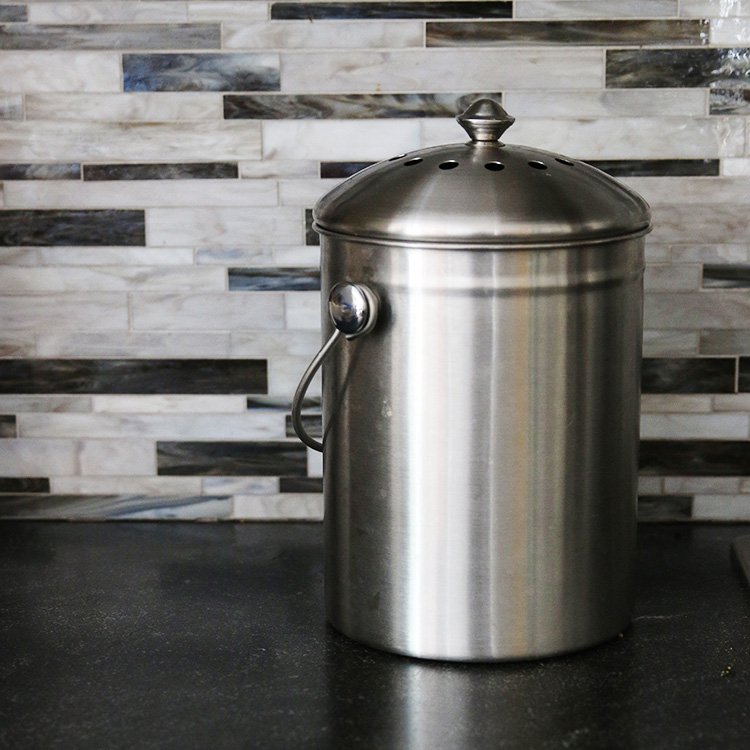
Countertop Compost Crock
A countertop compost caddy is a really common container for storing compostable food scraps until you take them out to the compost bin, tumbler, or whatever system you use. Some (though not all) retail countertop compost containers have charcoal filters under the lid. The charcoal filters help prevent smells from escaping the container and, consequently, significantly reduce the risk of your scraps attracting insects or pests.
We use this Natural Home Brands container in our kitchen. We have replaced the charcoal filter on the Natural Home Brands container several times (about once every six months), but the container is still in great shape. We rinse it with soap and water each time we empty it. Beyond that, it’s super low maintenance.
Related Reading: 7 Simple Tips to Prevent Kitchen Compost Bins from Smelling
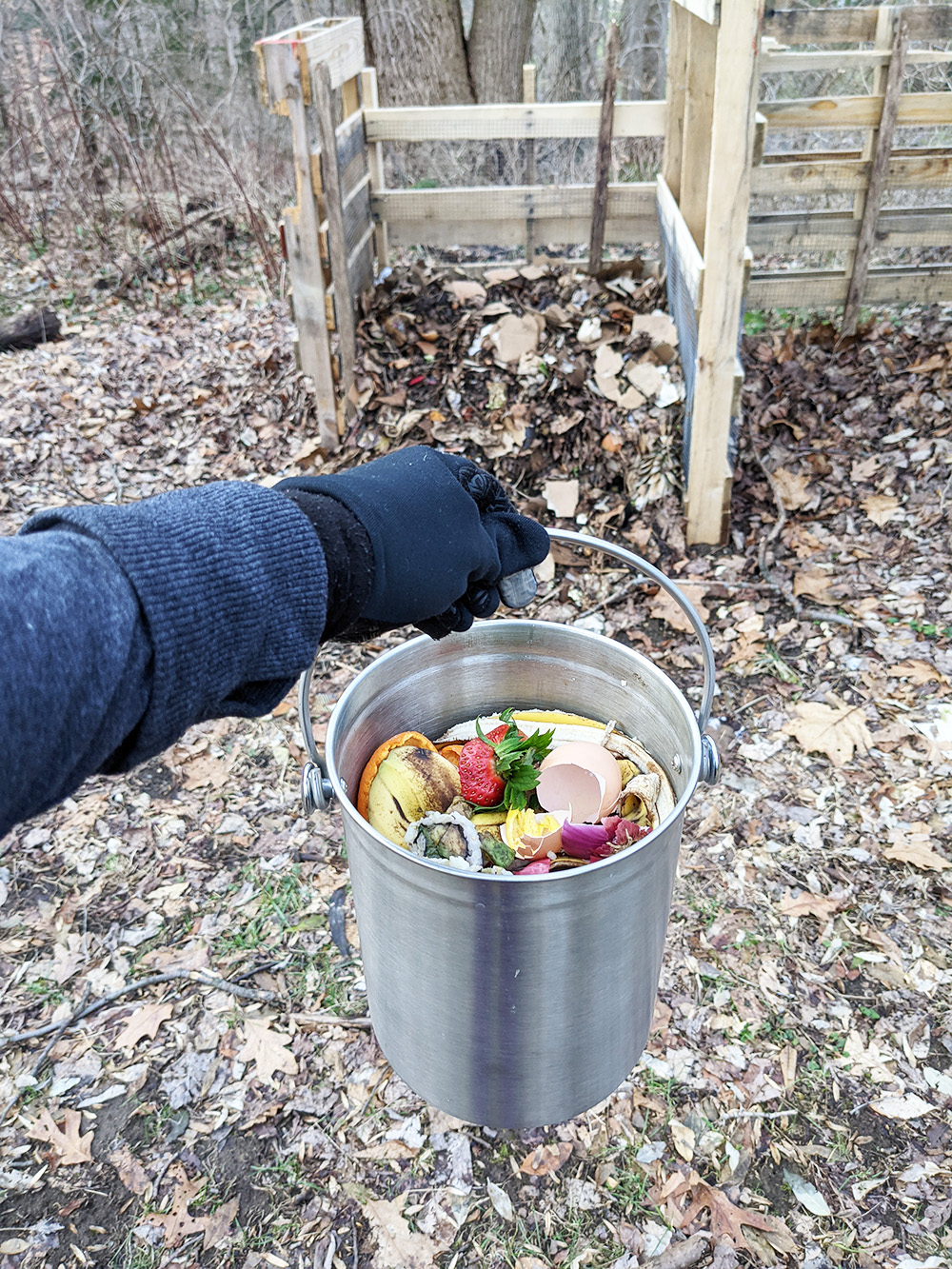
Compostable Liners or No Compostable Liners?
As a quick aside, compostable liners in countertop compost buckets are entirely optional. I did not use a compostable liner for many years, and now I do use one. They help keep the bucket cleaner and make it easier to manage scraps.
But they also break down pretty slowly (and may not be accepted in some types of community composting systems). Most of these compostable bags do not compost well in backyard composting bins or small community piles. The temperature does not get high enough to break them down properly.
Compostable bags will break down in industrial composting facilities, so if you use a collection service or drop off at a commercial composting facility, compostable liner bags probably won’t cause any issues (but be sure to check their guidelines to be sure).
Related Reading: Everyday Kitchen Items: Home Compostable vs. Industrial Compostable
If you choose to skip the bags, which can save money, you could add a sheet of paper towel or paper at the bottom of the container to make it easier to empty the contents into a compost bin. This helps prevent items from sticking to the bottom. However, it’s definitely not necessary.
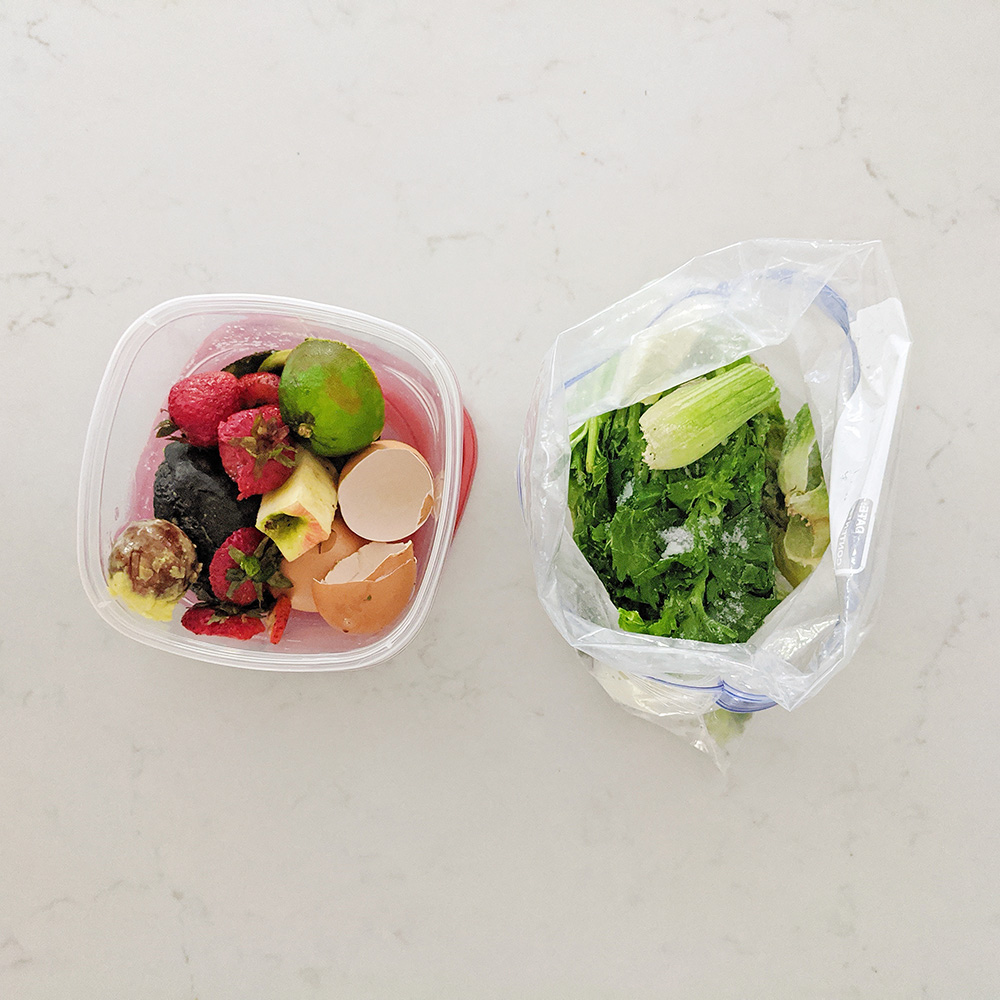
Compost Container or Bag in The Freezer or Fridge
Many people simply add food scraps to a plastic bag or another container and store the food scraps in the freezer until they are ready to transfer them to the compost pile or another bin or bucket. This is a great option that costs virtually nothing, and you can reuse containers or plastic bags you already have on hand. Clamshell take-out containers, plastic salad greens containers, and Ziplog bags are common containers people use to freeze scraps between compost drop-offs.
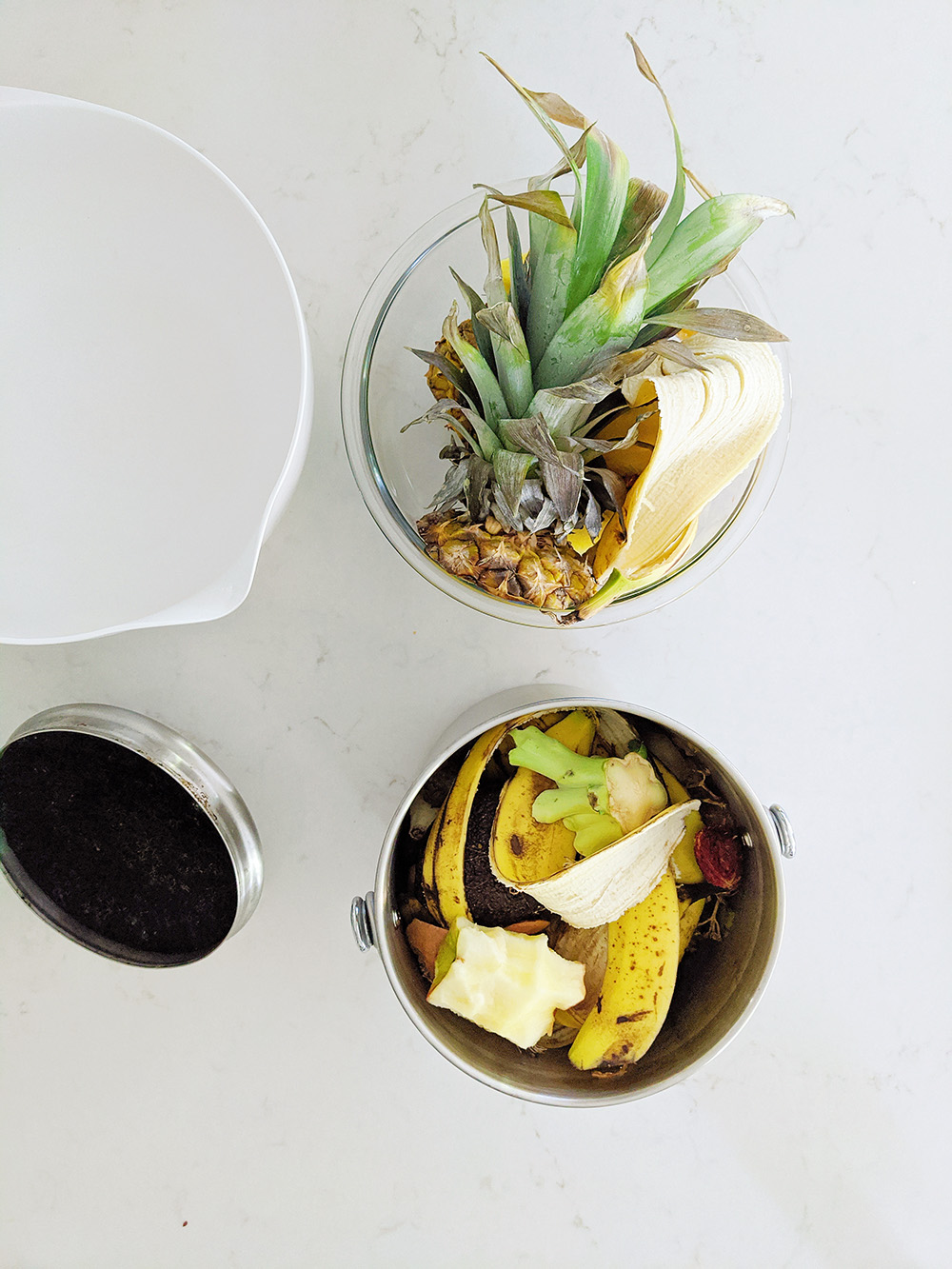
Food Scrap Bowl On Counter
If your compost bin or pile is easily accessible, you can store your food scraps in a bowl on your counter. Be sure that you bring these out to your pile daily so they don’t start to attract fruit flies and other insects. However, many contributors to the Compost Chronicles series keep their food scraps on the counter and take them out each evening.
Compost Bucket Under Sink
Many people who use a composting pickup service keep food scraps in an enclosed bucket under their sink. The bucket is picked up each week or every other week by the composting service. Even if you don’t use a composting service, you could still store your food scraps in an airtight bucket in a cabinet or under the sink in your kitchen. Then bring the scraps out to the compost pile or bin every week or two.
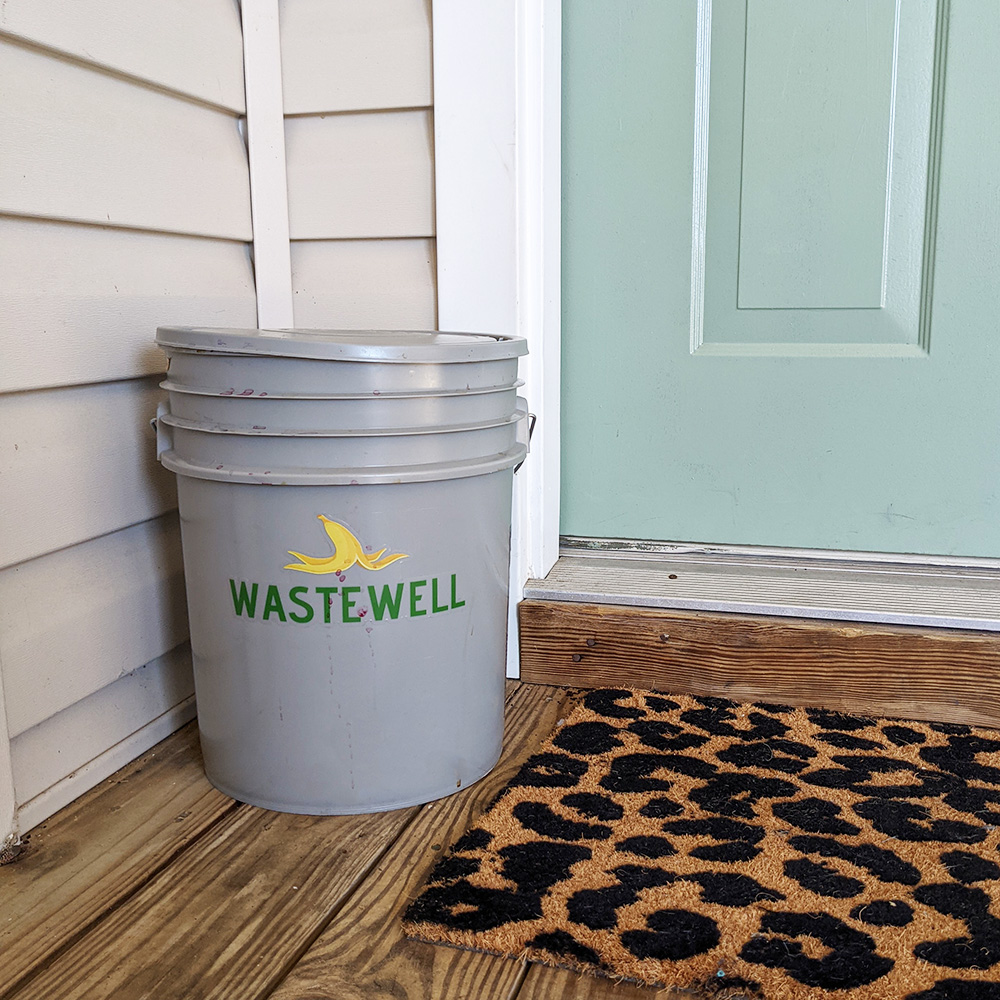
Compost Bucket On Your Patio or Balcony
You may be able to store your food scraps in an airtight bucket right outside your door on a patio or balcony. So long as the bucket is sealed tightly and emptied periodically, it shouldn’t attract pests or wildlife.
If you keep it outside in the winter, the food scraps could freeze inside the bucket which can make it harder to empty, but it’s worth a shot if you have space.
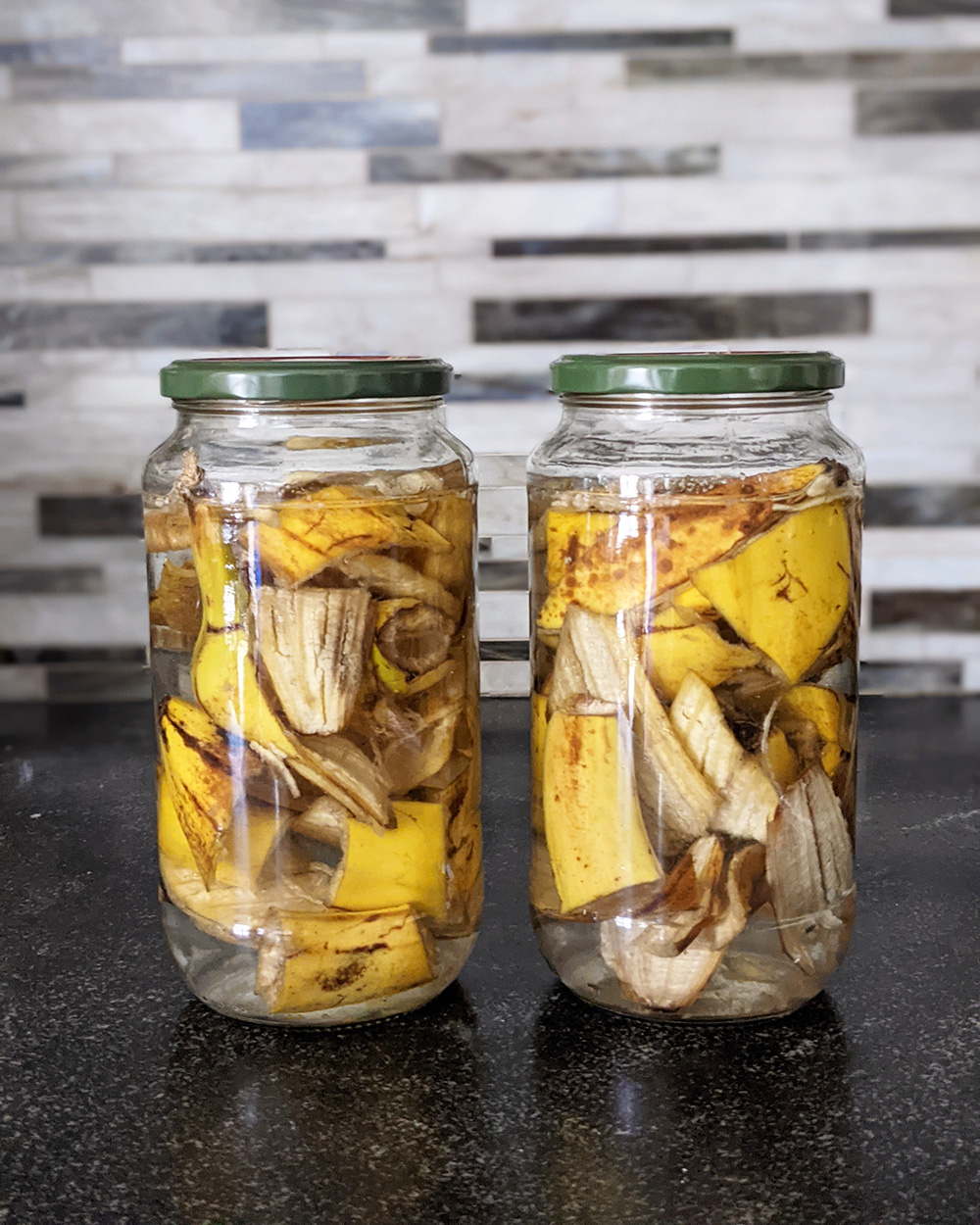
Compost Jar On The Counter
One person who drops off her compost food scraps in my compost bin (and I found them through ShareWaste) keeps her compost scraps in a nice jar on the counter. Although I was surprised to see her compost scraps in a clear glass jar, it was also the prettiest composting food scrap container I’d seen.
If you have a jar available, it will work. So long as it’s airtight or has a charcoal filter, just about any container on the counter will hold food scraps for several days or up to a week until you can put them in the compost bin.
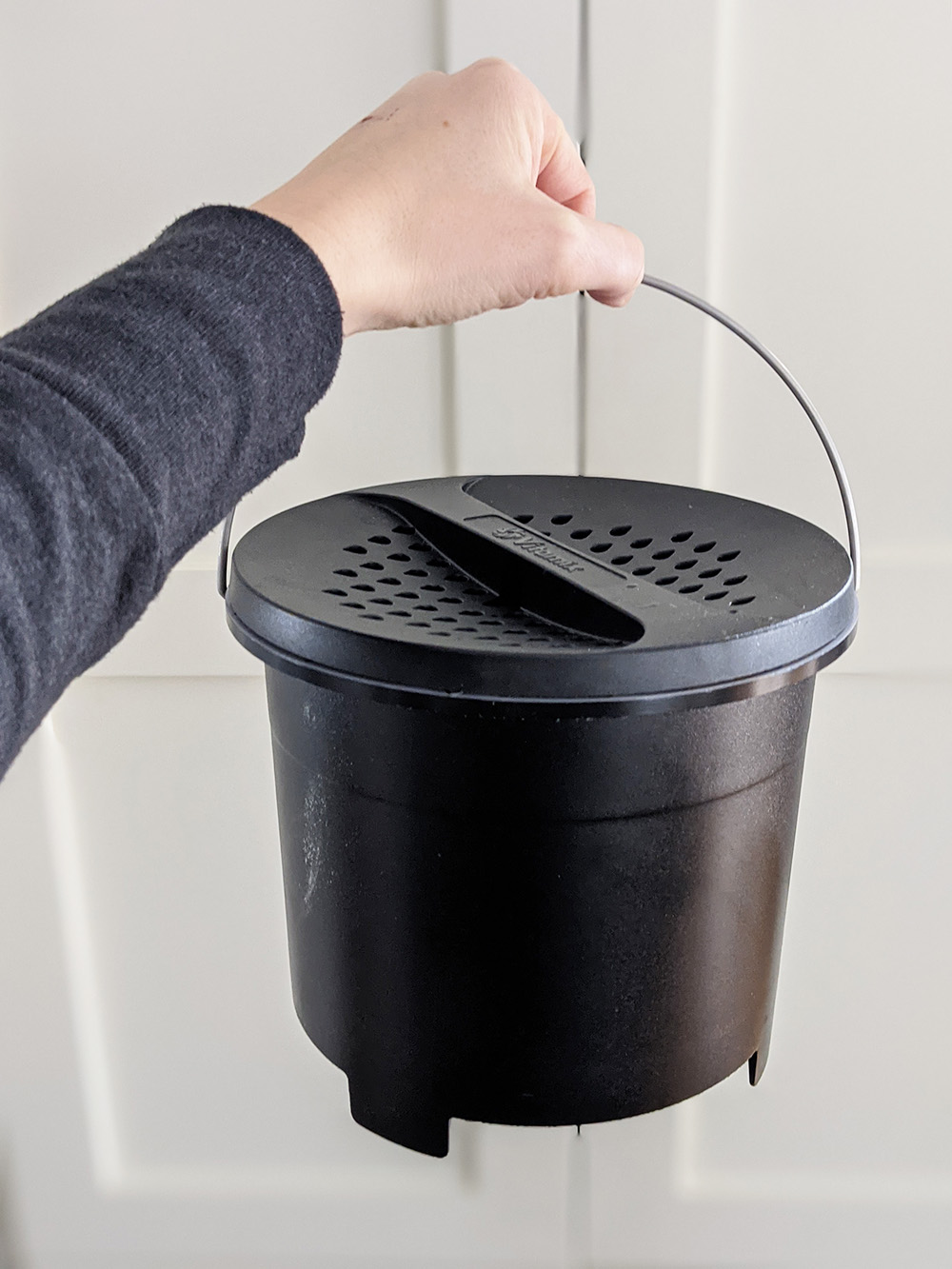
Electronic Composter Bucket on Counter
If you have an electronic composter, like the Foodcycler, you can easily keep your food scraps right in the compost bucket that comes with the machine. We had a Foodcycler. The bucket is sleek and simple so it looks nice on the counter and doesn’t feel like it needs to hide. It also has a built-in charcoal filter on the top to prevent smells from seeping out of the bucket.
Related Reading: Electric Composting Resources
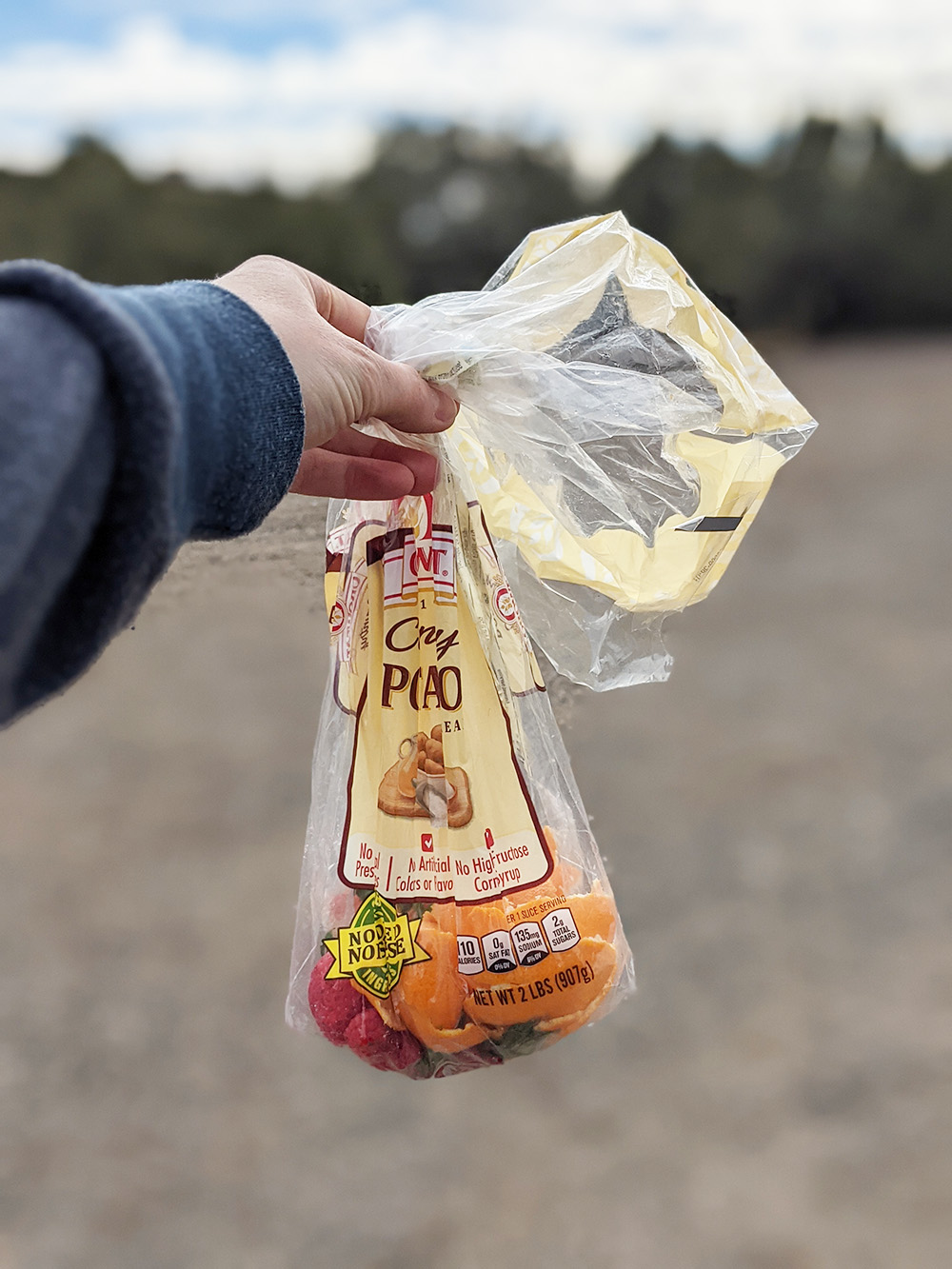
Collect Food Scraps In A Plastic Bag
If you’re an especially ambitious composter, you might even consider bringing food scraps home with you if you’re out and about instead of throwing them into the trash to end up in a landfill.
While hiking recently, we collected our food scraps in a repurposed bread bag and brought them home to our compost bin. This was a really easy way to avoid throwing them out without taking up a lot of space or being particularly inconvenient. Storing food scraps in a plastic bag works on the road and even at home!
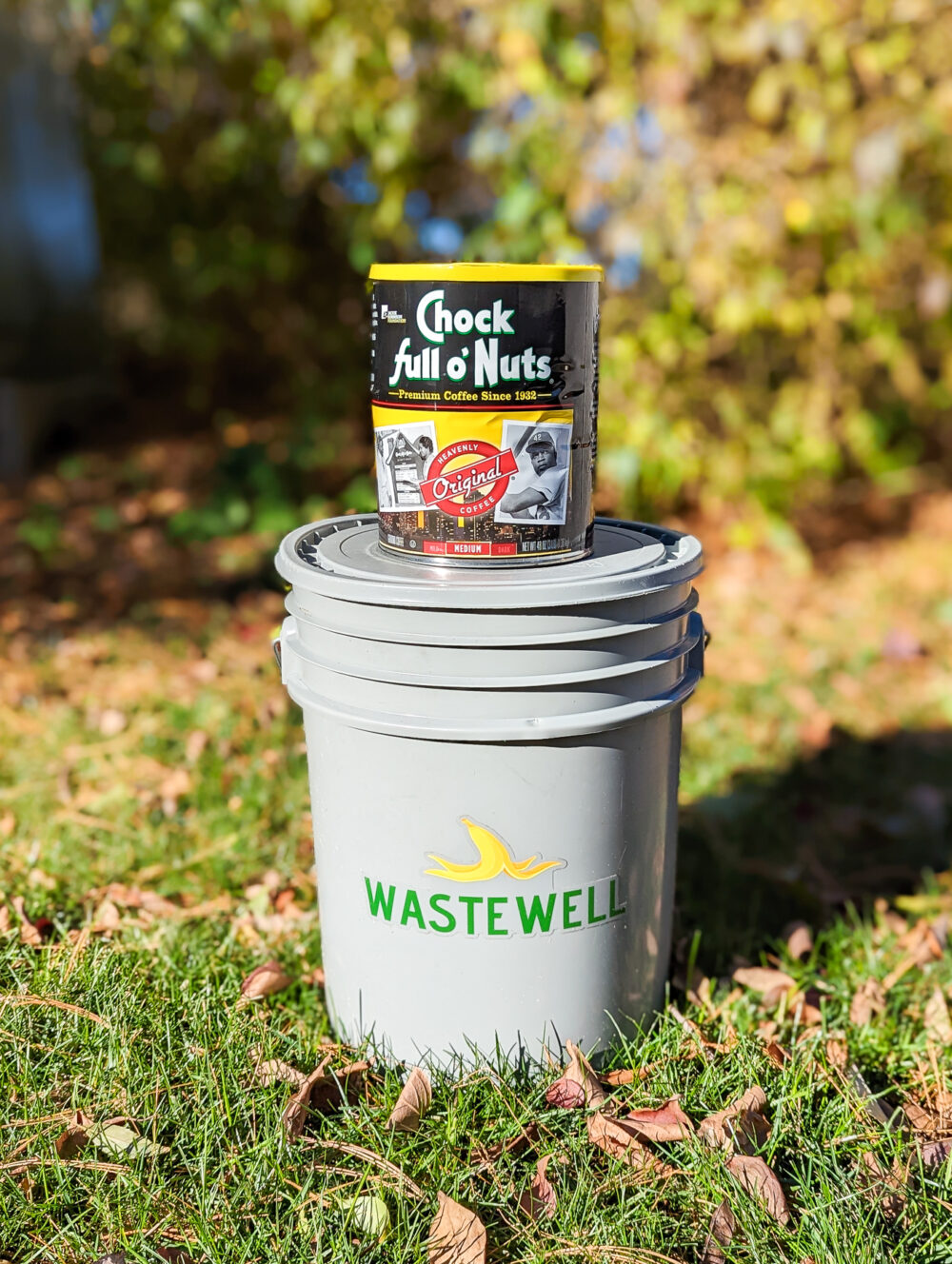
Coffee Can Compost Container
When I used to own and run a curbside composting company, I loved finding food scraps in this coffee can from one of my customers. If you’re looking for something really simple that you will empty fairly regularly, this is a great option. The tight lid will help keep any smells in and little buggers out.
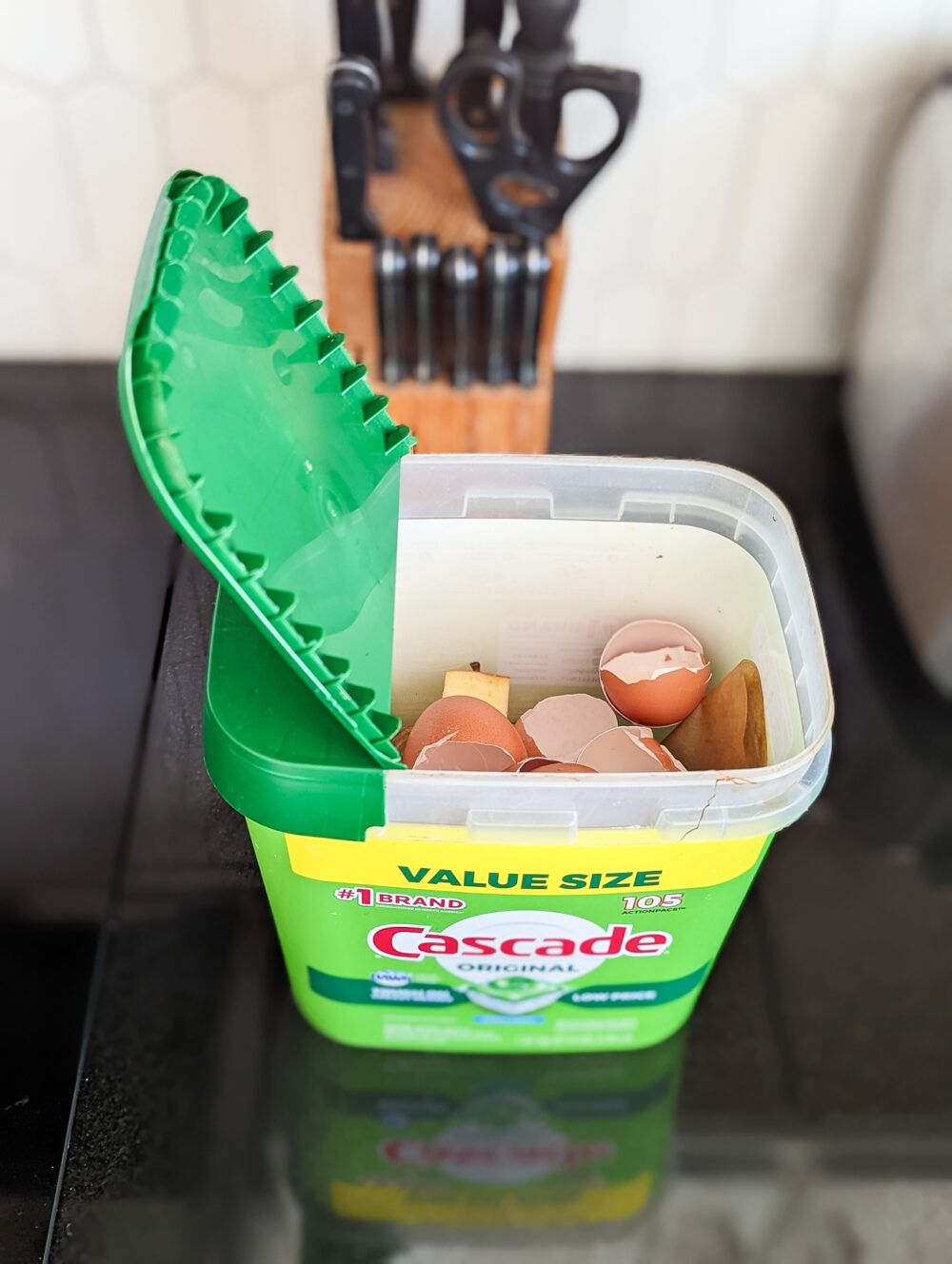
Repurposed Plastic Container to Hold Food Scraps
Single-use reuse at its best! This detergent container holds food scraps, closes tightly, and can be cleaned to be reused over and over again. If you don’t want to keep something like this on your counter, you could keep it in a cabinet or under your sink. Any container you have that closes tightly and works for you is great!
Generally, the best way to store your food scraps in your kitchen depends on how often you move your food scraps to your composting bin. Other factors, such as climate or the number of bugs and pests that hang around where you live, could also impact how quickly food scraps on your counter become stinky or attract bugs.
In the end, do what works for you and your family. Whichever system best suits your household, your budget, and your lifestyle is the right system for you.
If you compost at home, how do you store your food scraps before you take them out to your compost bin? Share any other ideas in the comments so this post can be even more helpful to those looking to start composting at home.

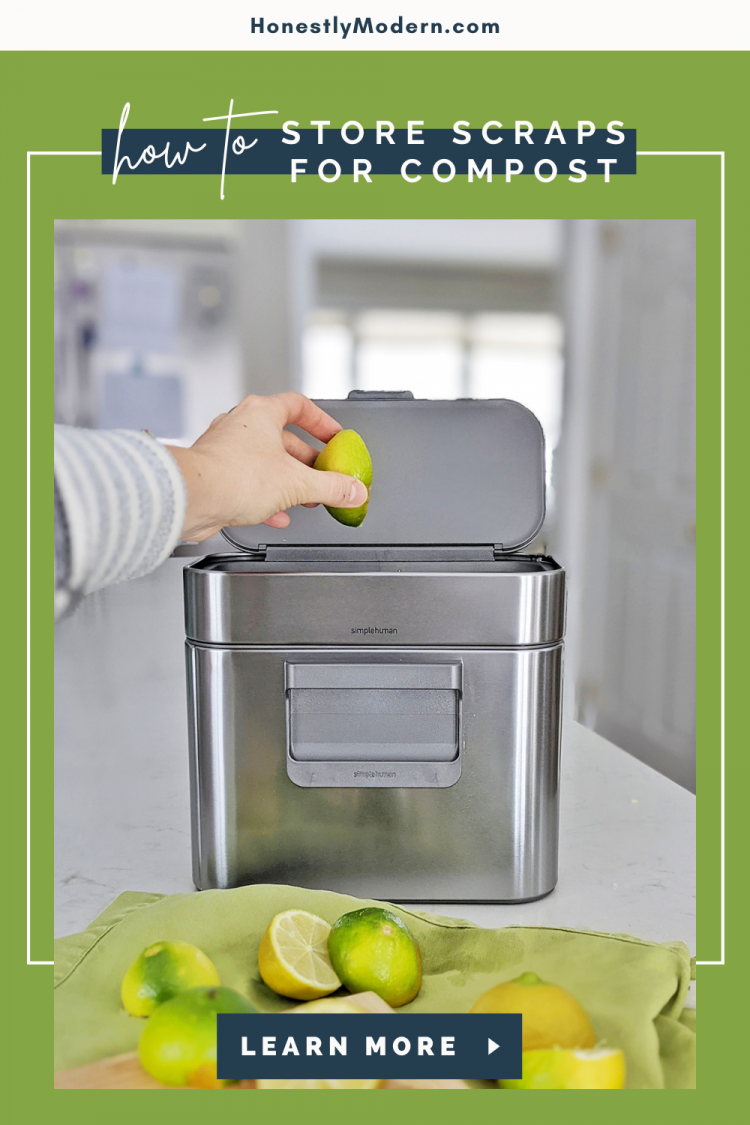
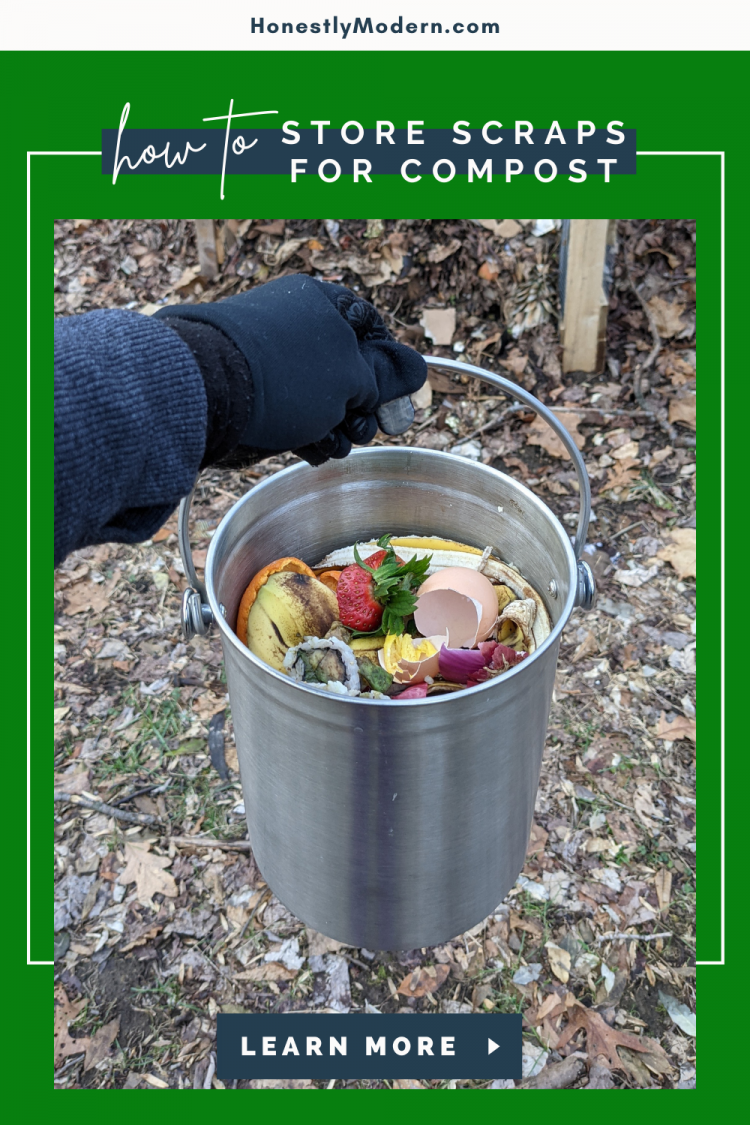
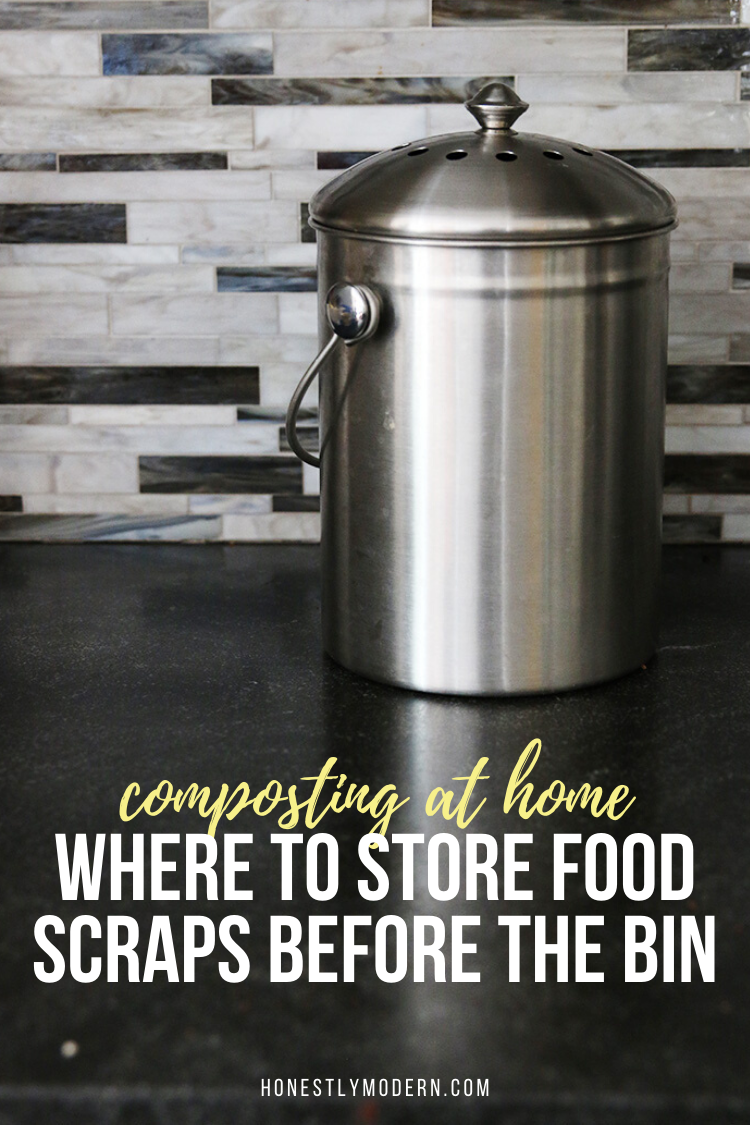

Jen Panaro
Jen Panaro, founder and editor-in-chief of Honestly Modern, is a self-proclaimed composting nerd and advocate for sustainable living for modern families. To find her latest work, subscribe to her newsletter, Stepping Stones.
In her spare time, she’s a serial library book borrower, a messy gardener, and a mom of two boys who spends a lot of time in hockey rinks and on baseball fields.
You can find more of her work at Raising Global Kidizens, an online space to help parents and caregivers raise the next generation of responsible global citizens.


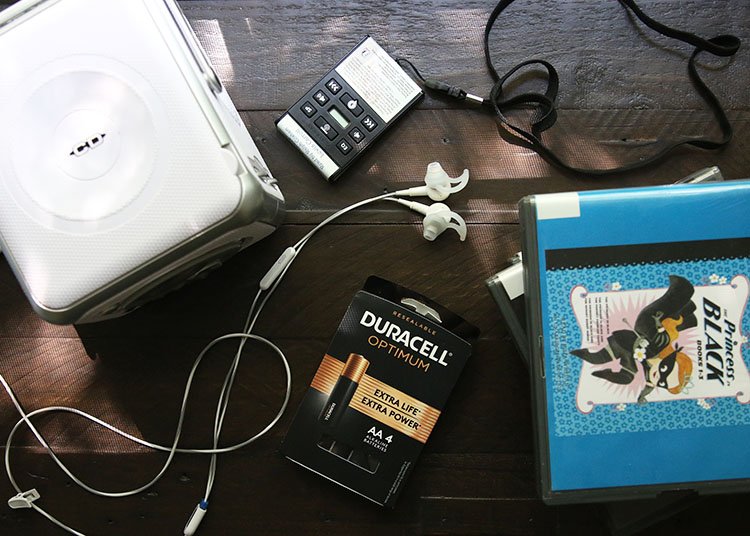
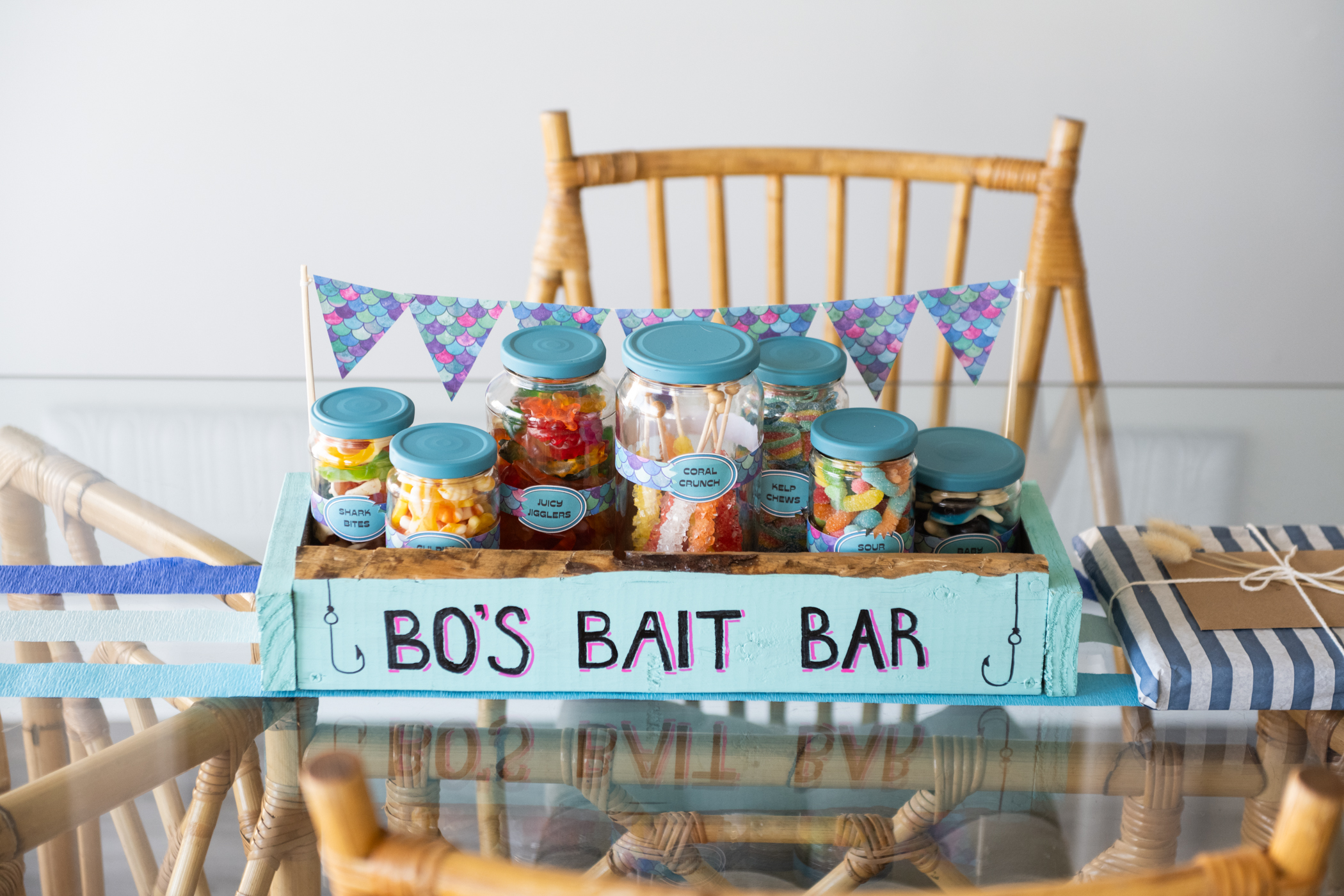
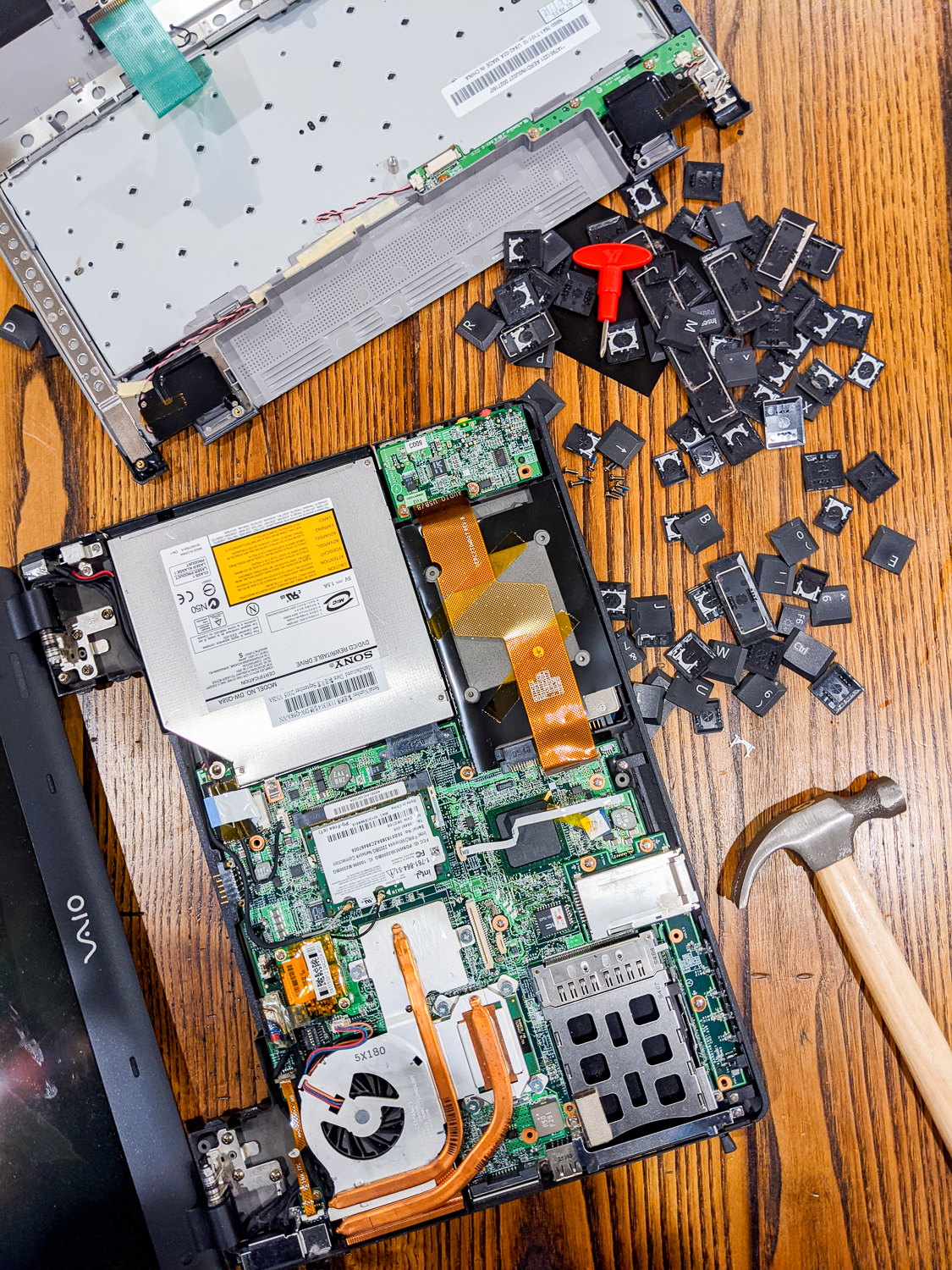
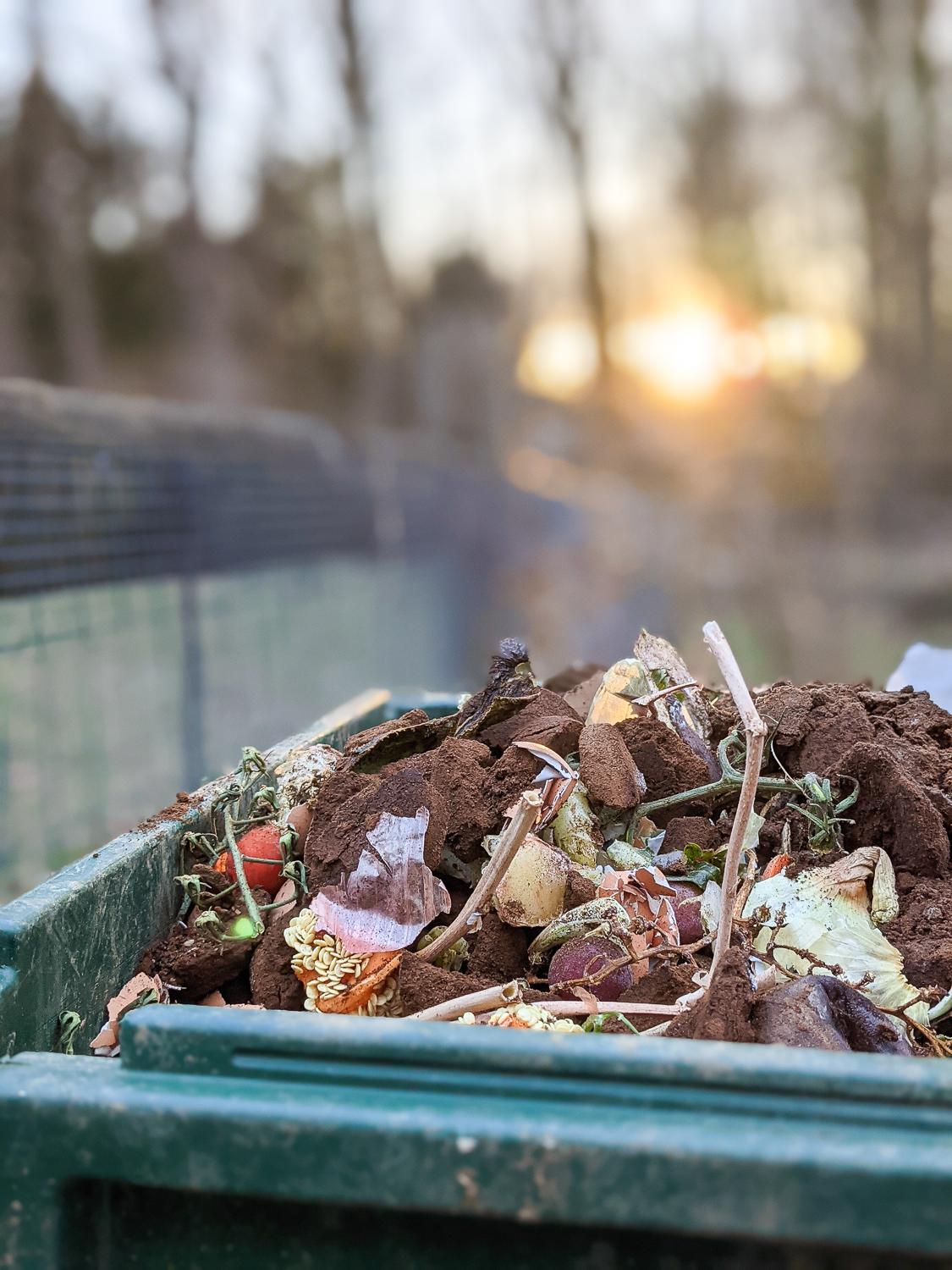
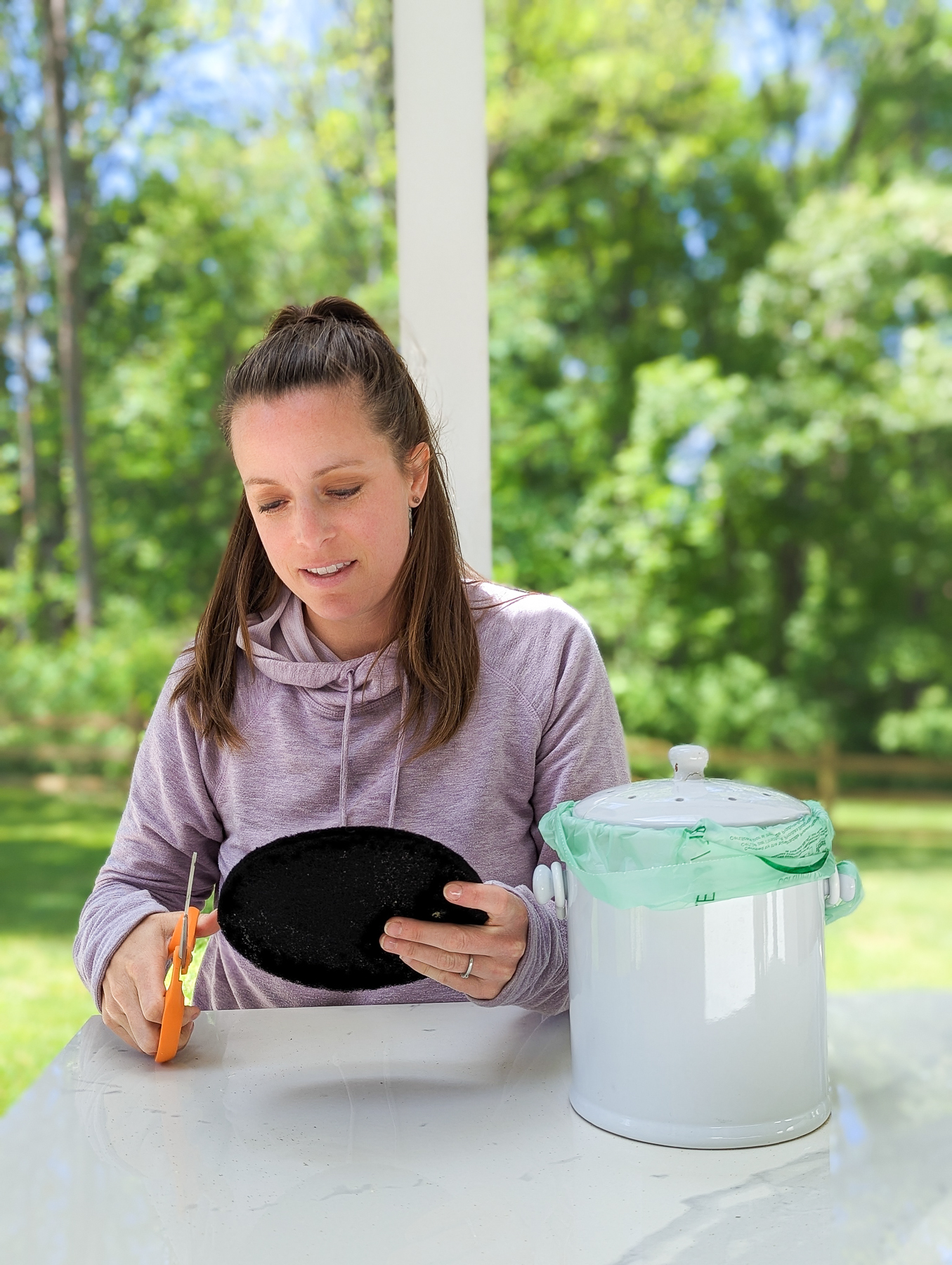

I’m composting and I’m having trouble with my husband, he is not ok with my going green and saving plastic bags and food scraps he’s afraid that I’m going to attract bugs this can be a huge strain on our marriage, his parents made him compost as a kid and he didn’t like that job. I’m not giving up
It can be hard to get other family members on board. Hopefully, if you slowly incorporate it into your family life and show there are no issues, he’ll come around. 🙂 Good luck!
I have a fantastic built in compost pail that has a rubber gasket to control odour and flies. It is set right into my counter; made by Blanco. Have had it for years and would highly recommend if you are building a new kitchen or doing a remodel.
Thanks for the recommendation!
I use airtight ceramic canisters (like the flour, sugar, tea/coffee) that sit on my counter. I use one for food scraps & one for egg shells. When they are full, I take them out. I rinse my egg shells & let them air dry outside. Once dry, I crush them in the blender & store in a recycled jar or plastic container. I use them to fertilize my garden, keep bugs away and supplement my compost.
Thanks for sharing. That’s another good idea.